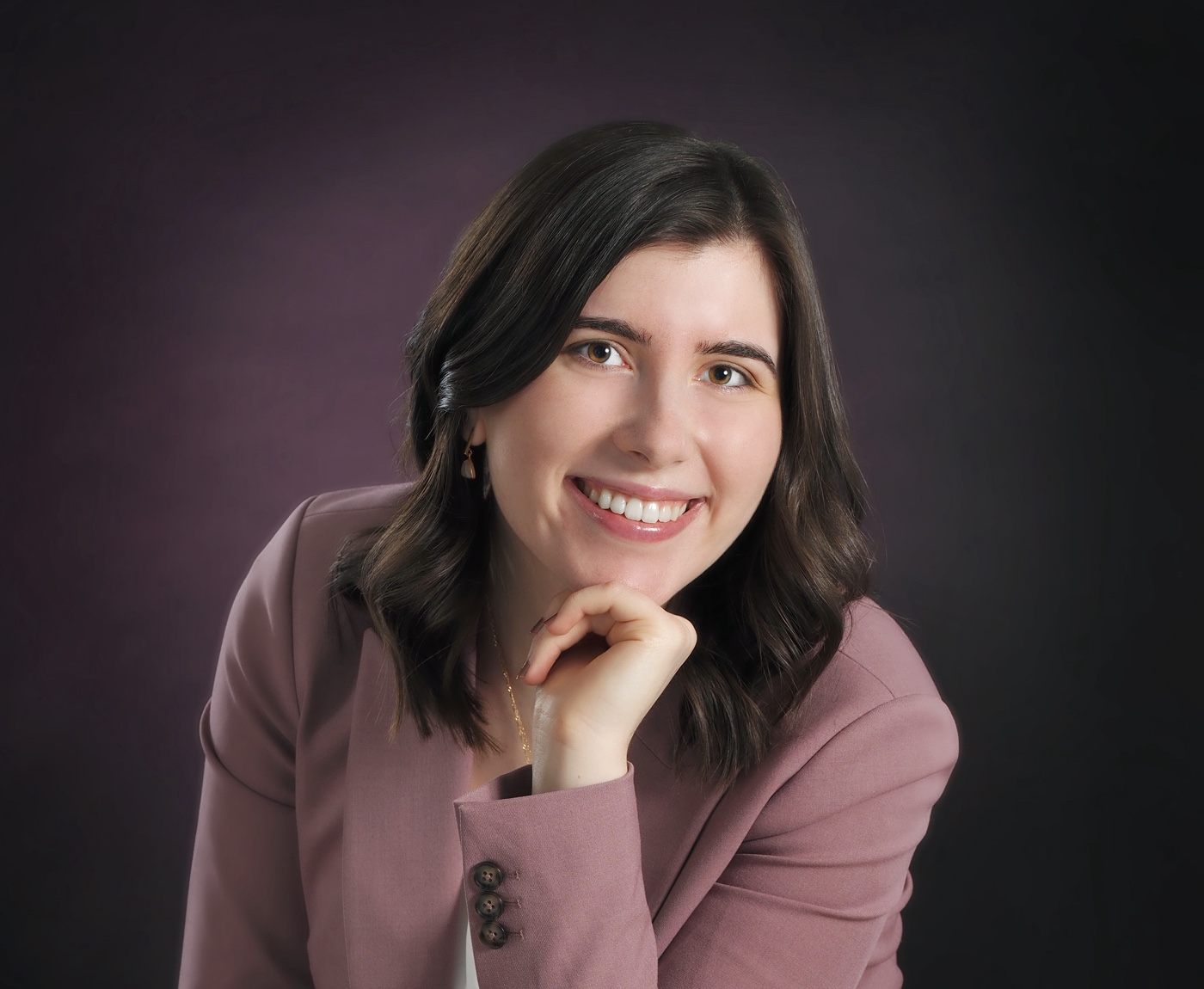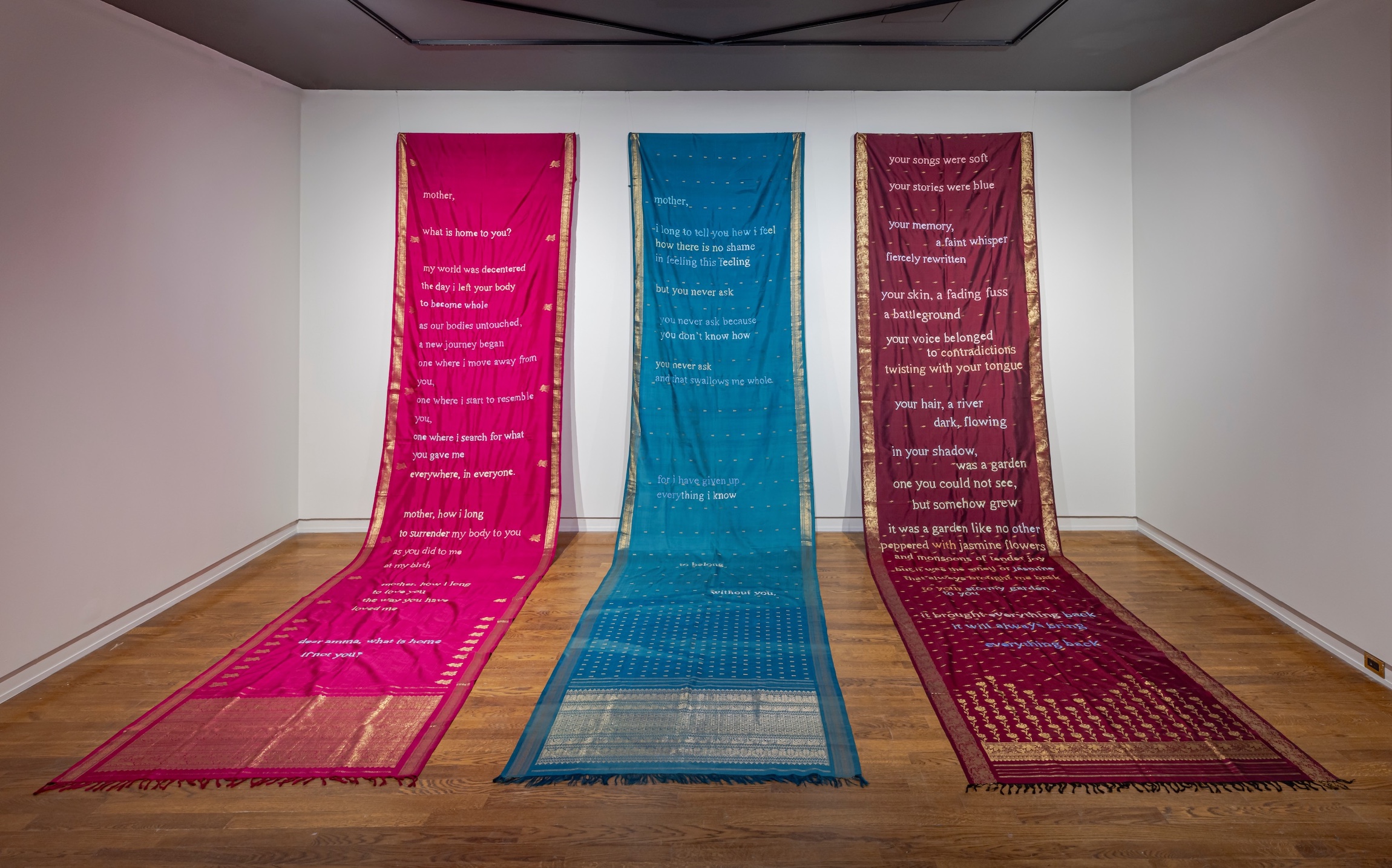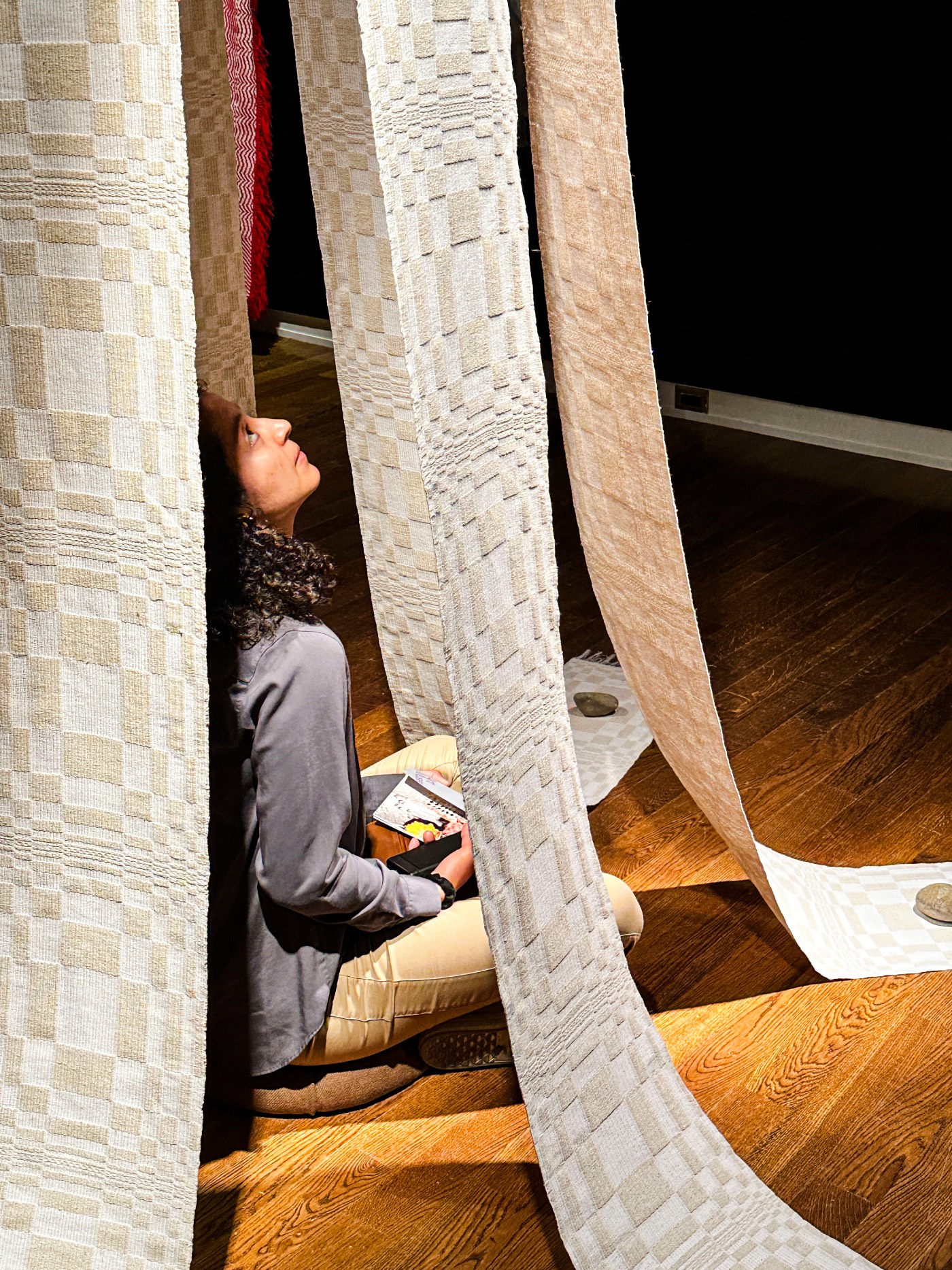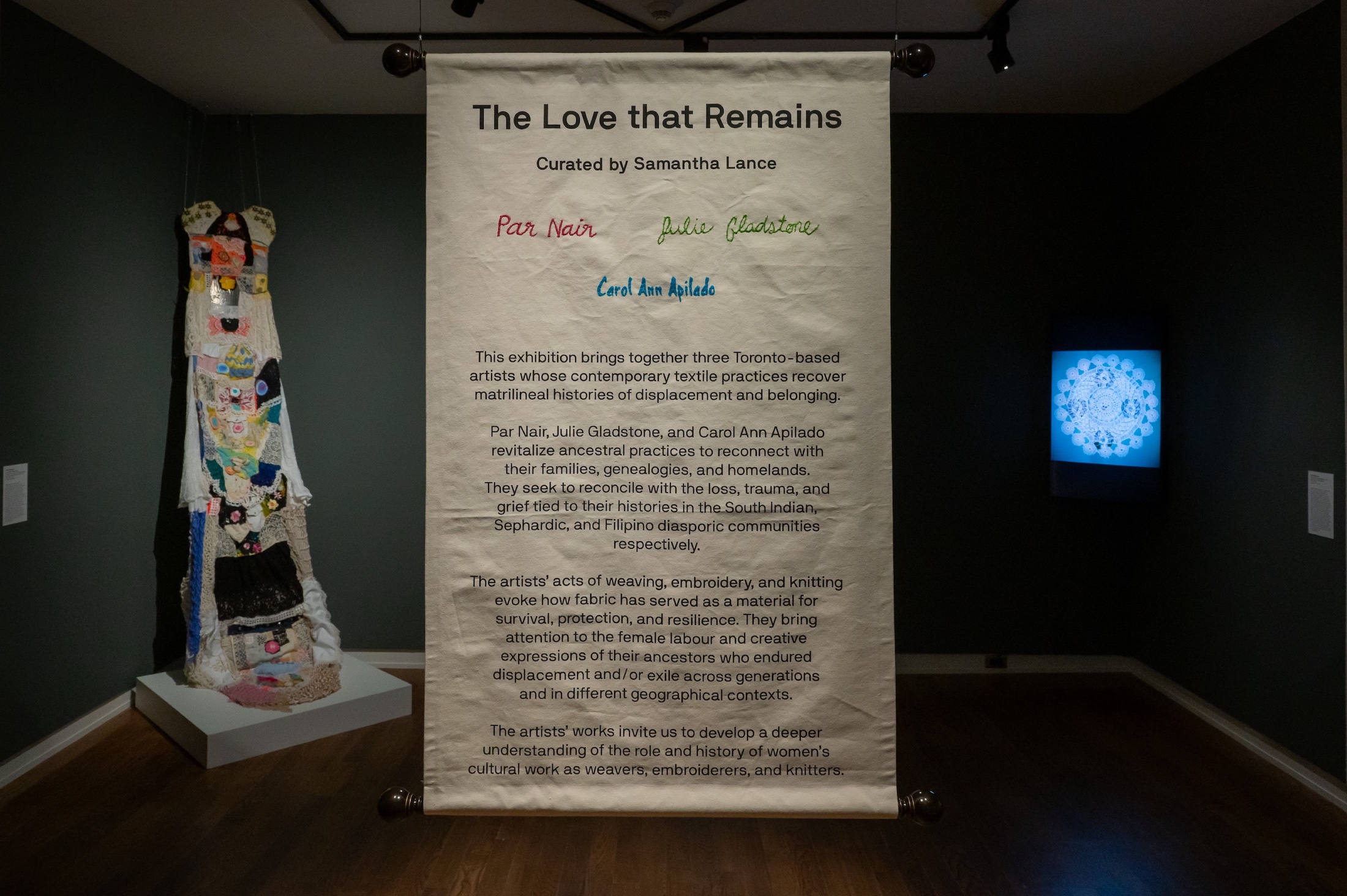
Meet Samantha Lance: Stitching Together Histories and Futures
#CFC Member #CFC Members Spotlight #Samantha LanceCFC Members Spotlight is a bi-monthly interview series showcasing the work of our members on our blog and social media. Through this series, we highlight the diverse curatorial practices in our community and encourage new connections and exchanges.
Meet CFC Member Samantha Lance
Samantha Lance is a curator and writer based in Canada with a Master of Visual Studies in Curatorial Studies degree from the University of Toronto. She is currently the Curator for the Visual Arts Centre of Clarington (Bowmanville, Ontario) and has worked with the Art Museum at the University of Toronto, The Power Plant Contemporary Art Gallery, and the Art Gallery of Algoma.
We recently interviewed Samantha Lance to learn more about her curatorial journey, inspirations, and insights into the art world.
Image credit: Par Nair, Letters of Haunting, hand-embroidery on mother’s silk sarees in “The Love that Remains“ at the Art Museum at the University of Toronto. Photo by Toni Hafkenscheid.
CFC: What inspired you to pursue a career as a curator? Was there a particular moment or experience that sparked your interest?
SL: My journey began with curating the visual art for my high school’s annual arts festivals. After having the opportunity to see the artworks up close and arrange them in the exhibition space, I realized that curating memorable art experiences that bring people together is what I wanted to do as a career. I will always be grateful to my two high school art teachers, Mr. and Mrs. DiCerbo, for their guidance and encouragement while I was developing my portfolio for OCAD University’s Criticism and Curatorial Practice undergraduate program.
CFC: What thread or idea ties your work together?
SL: As a curator, I see myself as a listener, learner, collaborator, and conceptual engineer when it comes to working with artists and planning exhibitions. I have always been fascinated by artists who experiment with mixed media, natural materials, and unconventional processes in order to create something new. To broaden my worldview, I conduct research and cultivate relationships with artists from different cultures, ancestries, life experiences, and spiritual beliefs. I am drawn to interdisciplinary practices that explore hybrid identities, the healing of trauma, and intergenerational knowledge transfer. I believe that these artistic interventions have the potential to change the way we perceive and interact with memory, familial relationships, and our surroundings. I am also inspired by generations of curators who made it their lifelong work to advocate for women artists, textile practices, and the revival of ancestral techniques. Their contributions to the contemporary art scene have taught me that exhibition-making is risk-taking.
CFC: Name a project or exhibition that holds special significance for you. What made it stand out?
SL: From September 2023 to May 2024, I was fortunate to collaborate with three talented artists and the staff at the Art Museum at the University of Toronto to plan and produce my Master of Visual Studies Graduating Exhibition, “The Love that Remains”.
This exhibition brought together three Toronto-based artists whose contemporary textile practices recover matrilineal histories of displacement and belonging. Par Nair, Julie Gladstone, and Carol Ann Apilado revitalize ancestral practices to reconnect with their families, genealogies, and homelands. They seek to reconcile with the loss, trauma, and grief tied to their histories in the South Indian, Sephardic, and Filipino diasporic communities respectively. The artists’ acts of weaving, embroidery, and knitting evoke how fabric has served as a material for survival, protection, and resilience. They bring attention to the female labour and creative expressions of their ancestors who endured displacement and/or exile across generations and in different geographical contexts. The artists’ works invite us to develop a deeper understanding of the role and history of women’s cultural work as weavers, embroiderers, and knitters.
From start to finish, curating is a labour of love and a powerful form of storytelling. One of the most rewarding experiences was having the opportunity to provide a family tour, a curatorial tour, and a panel talk called Threading Through Time: In Conversation with Par Nair, Julie Gladstone, and Carol Ann Apilado. It was exciting to see visitors deeply engage with the artworks and listen to their thoughtful questions. They also shared stories with me about their textiles and heirlooms that were passed down from their mothers and grandmothers. In these special moments, I knew that I wanted to continue creating public programs that encourage visitors to share their personal connections in spaces where they feel valued and heard.
Image credit: Visitor sits inside Carol Ann Apilado’s handwoven installation, Channel at the opening night of “The Love that Remains”, May 1, 2024, Art Museum at the University of Toronto. Photo by Kexin Han.
CFC: What’s your favorite part about being a curator? And, if you don’t mind sharing, what’s the most challenging?
SL: My favourite part is the studio visit. Whether it be in person or online, I love seeing their work-in-process and learning more about their journey of becoming an artist. Over the years, I have found that artists are very generous people and are open to engaging in deep discussions.
I think the most challenging aspect of curating can be the critical feedback one receives while developing an exhibition proposal. Throughout my graduating year in my Master’s degree, there were numerous times I had to present my exhibition idea to my thesis panel. Looking back, I realized that I had to go through difficult moments of uncharted territory in order to make my exhibition and thesis paper the best they could be.
CFC: Any hot takes on the current state of the curatorial field or the art world in general? What do we need more or less of?
SL: Everywhere I look, it is exciting to see more exhibitions that are celebrating and spotlighting textile practices, ancient knowledge, and immigrant stories. Last November, I attended the Textile Society of America’s online symposium called Shifts and Strands: Rethinking the Possibilities and Potentials of Textiles. There were many incredible presentations that took place in a week, but the one that blew me away the most was a keynote panel discussion called “Curating Textiles: Weaving Transcultural Narratives” between Lotte Johnson and Wells Fray-Smith in conversation with Dr. Christine Checinska.
Johnson and Fray-Smith were the curators of a groundbreaking exhibition called Unravel: The Power and Politics of Textiles in Art at Barbican Art Gallery, London (13 February – 26 May 2024). This exhibition “showcased the work of 50 international, intergenerational artists who use textiles and fibre to communicate vital ideas about power, resistance and survival. From intimate hand-crafted pieces to monumental sculptural installations, these works offered narratives of violence, imperialism and exclusion alongside stories of resilience, love and hope.” I admire both curators for their deep research, thoughtful and ethical collaborations with artists from different diasporas, and the genuine respect for presenting textiles in a gallery setting.
Curating relationships can be similar to these words spoken by Lotte Johnson: “This idea of weaving as a dialogue, a form of communication, of offering these possibilities to reimagine how we might move, speak and communicate in the present, think about the past, and carry it with us in the future.”
Image credit: Documentation of the Curatorial Statement and Julie Gladstone’s artworks, Ancestral Dress (left) and Portal into Dreamspace (right) in “The Love that Remains” at the Art Museum at the University of Toronto. Photo by Dominic Chan.
CFC: What advice would you give to aspiring curators just starting their careers?
SL: Go to as many exhibitions as you can! You never know what connections you will make. Find your focus and discover the topics you are really interested in, but remember to be open to things outside of your comfort zone. Don’t be afraid to put yourself out there and ask questions to the artists or the curators. Every relationship begins with a conversation, and I’m sure they would love to have a coffee with you.
Explore more of Samantha Lance’s work on her website.
Profile photo credit: Anna Pelletier-Doble (Kevanna Fine Photography)
Are you interested in learning more about our CFC membership? Dive into how to become a CFC member here.










